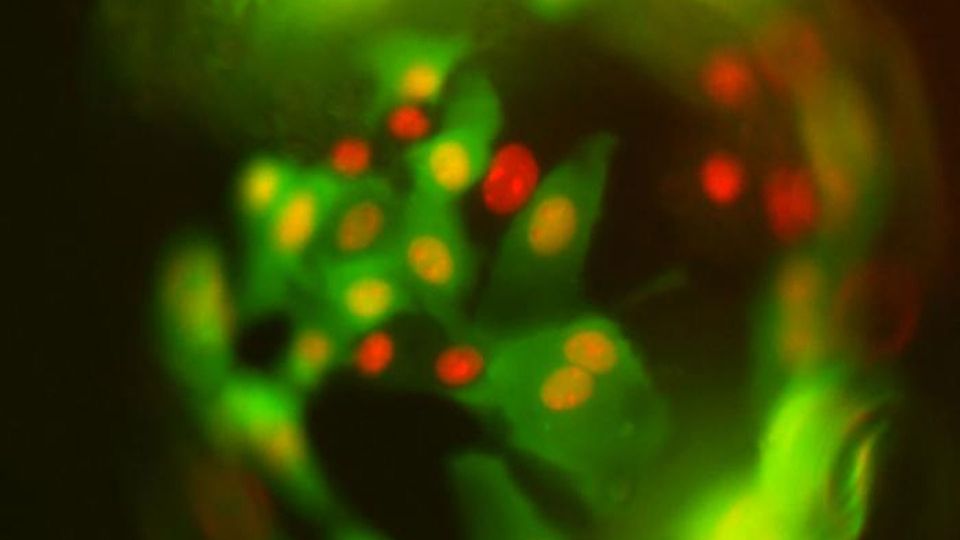Precise Gene Editing: Advanced Tools For Complete Gene Insertion

Table of Contents
CRISPR-Cas Systems: Revolutionizing Precise Gene Editing
CRISPR-Cas9 systems have emerged as a dominant force in precise gene editing, offering unprecedented speed, efficiency, and affordability compared to older methods. This revolutionary technology harnesses the natural defense mechanism of bacteria, adapting it for precise genome manipulation.
Mechanism of Action
The CRISPR-Cas9 system relies on a guide RNA (gRNA) molecule, designed to complement a specific target DNA sequence, and the Cas9 enzyme, a molecular scissor that cuts the DNA at the targeted location. The gRNA acts as a navigation system, guiding Cas9 to the precise genomic location for modification. This targeted double-stranded break initiates the cell's DNA repair mechanisms.
Complete Gene Insertion with CRISPR
CRISPR facilitates complete gene insertion primarily through two cellular pathways:
-
Homology-directed repair (HDR): This pathway utilizes a provided DNA template with the desired gene sequence homologous to the target site. The cell uses this template to accurately repair the double-stranded break, effectively integrating the new gene into the genome. HDR offers high fidelity, resulting in precise gene insertion.
-
Non-homologous end joining (NHEJ): This pathway repairs the break without a template, often leading to insertions or deletions at the target site. While less precise for complete gene insertion, NHEJ can be useful for gene disruption studies.
Advantages of CRISPR for complete gene insertion include:
- Improved targeting specificity through modifications like Cas9 nickases (which create single-stranded breaks, reducing off-target effects).
- Enhanced HDR efficiency through various strategies (e.g., optimizing donor template design, employing cellular factors that enhance HDR).
- Applications in correcting genetic defects and inserting therapeutic genes.
TALENs: Another Powerful Tool for Precise Gene Editing
Transcription Activator-Like Effector Nucleases (TALENs) represent another sophisticated approach to accurate gene editing. They offer a powerful alternative to CRISPR-Cas systems, particularly in situations demanding high specificity.
How TALENs Work
TALENs consist of a DNA-binding domain composed of a series of tandem repeat sequences, each recognizing a specific nucleotide. This modular design allows for the creation of customized TALENs targeting virtually any DNA sequence. These DNA-binding domains are fused to a nuclease domain, typically FokI, which cuts the DNA at the target site once two TALEN monomers bind to adjacent sites.
Complete Gene Insertion with TALENs
Similar to CRISPR-Cas systems, TALENs can be used to achieve complete gene insertion via HDR. The precise double-stranded break generated by TALENs provides a site for HDR-mediated repair, using a provided template containing the gene to be inserted.
Advantages and Disadvantages of TALENs:
- Advantages: Higher specificity in some applications compared to early CRISPR systems.
- Limitations: More complex and time-consuming design and construction process than CRISPR.
Successful gene insertion using TALENs has been demonstrated in various research and therapeutic settings, showcasing their effectiveness in precise genome engineering.
Overcoming Challenges in Complete Gene Insertion
While CRISPR and TALEN technologies represent significant advancements, challenges remain in achieving consistently high rates of complete gene insertion.
Off-Target Effects
Both CRISPR and TALEN systems carry the potential for off-target effects – unintended cuts at locations other than the desired target site. This risk is mitigated through:
- Improved guide RNA design (CRISPR) to enhance specificity.
- Utilizing high-fidelity Cas enzymes (CRISPR) with reduced off-target activity.
- Careful TALEN design to minimize off-target binding.
Delivery Systems
Efficient delivery of the gene editing machinery and the donor template into the target cells is critical for successful complete gene insertion. Strategies include:
- Viral vectors (e.g., adeno-associated viruses) – effective for gene delivery but can have limitations regarding cargo size and immunogenicity.
- Non-viral methods (e.g., lipid nanoparticles, electroporation) – generally safer but often less efficient than viral methods.
Challenges and Future Directions:
- Strategies for further improving HDR efficiency are continuously being explored.
- Delivering large genes remains a significant hurdle, requiring the development of more efficient delivery systems.
- Future directions include developing novel gene editing tools with even higher precision and reduced off-target effects.
Applications of Precise Gene Editing with Complete Gene Insertion
The ability to achieve precise gene editing and complete gene insertion opens doors to numerous groundbreaking applications.
Therapeutic Applications
Precise gene editing holds immense therapeutic potential for treating genetic diseases. Complete gene insertion is particularly crucial for correcting conditions caused by gene deletions or mutations where simply modifying existing sequences is insufficient. Examples include cystic fibrosis and hemophilia.
Research Applications
Precise gene editing, including complete gene insertion, is vital for advancements in basic biological research. It facilitates:
- Studying gene function by inserting modified versions or replacing genes entirely.
- Creating disease models by introducing specific mutations or gene deletions.
- Investigating gene regulation and interactions.
Examples of applications:
- Clinical trials are underway exploring the use of precise gene editing to treat various genetic diseases.
- The potential for gene therapy applications, including correcting genetic defects and preventing disease onset, is substantial.
- Gene insertion in model organisms (e.g., mice, zebrafish) is extensively utilized to study gene function and disease mechanisms.
Conclusion
Precise gene editing, particularly the ability to achieve complete gene insertion, represents a monumental leap forward in genetic engineering. Tools like CRISPR-Cas systems and TALENs have revolutionized our capacity to modify genomes with unprecedented accuracy and efficiency. While challenges remain, ongoing research continues to refine these techniques, addressing issues such as off-target effects and delivery system efficiency. The future of precise gene editing looks bright, promising transformative applications in both therapeutics and fundamental biological research. Explore the possibilities of precise gene editing and learn more about complete gene insertion techniques. Investigate the future of accurate gene editing—it holds the key to unlocking remarkable advancements in human health and scientific understanding.

Featured Posts
-
 Czy Odra Znow Zostanie Skazona Ocena Ryzyka Po Trzech Latach
May 30, 2025
Czy Odra Znow Zostanie Skazona Ocena Ryzyka Po Trzech Latach
May 30, 2025 -
 Bad Bunny Entradas Preventa Ticketmaster Y Live Nation Madrid And Barcelona
May 30, 2025
Bad Bunny Entradas Preventa Ticketmaster Y Live Nation Madrid And Barcelona
May 30, 2025 -
 Trumps Trade War 8 Key Impacts On The Canadian Economy
May 30, 2025
Trumps Trade War 8 Key Impacts On The Canadian Economy
May 30, 2025 -
 Djokovics Powerful Roland Garros Start Gauff And Andreeva Victorious
May 30, 2025
Djokovics Powerful Roland Garros Start Gauff And Andreeva Victorious
May 30, 2025 -
 Alcarazs Dominant Monte Carlo Victory First Masters 1000 Triumph
May 30, 2025
Alcarazs Dominant Monte Carlo Victory First Masters 1000 Triumph
May 30, 2025
Latest Posts
-
 Bmw Open 2025 Quarter Finals Zverev Vs Griekspoor A Munich Highlight
May 31, 2025
Bmw Open 2025 Quarter Finals Zverev Vs Griekspoor A Munich Highlight
May 31, 2025 -
 May Day In Kingston Images From A Robust Rally Daily Freeman
May 31, 2025
May Day In Kingston Images From A Robust Rally Daily Freeman
May 31, 2025 -
 Bmw Open 2025 Zverev Griekspoor Quarter Final Showdown In Munich
May 31, 2025
Bmw Open 2025 Zverev Griekspoor Quarter Final Showdown In Munich
May 31, 2025 -
 Madrid Open 2024 Berrettini Loses To Giron Despite Comeback Attempt
May 31, 2025
Madrid Open 2024 Berrettini Loses To Giron Despite Comeback Attempt
May 31, 2025 -
 Analysis Elon Musks Exit From The Trump Administration
May 31, 2025
Analysis Elon Musks Exit From The Trump Administration
May 31, 2025
